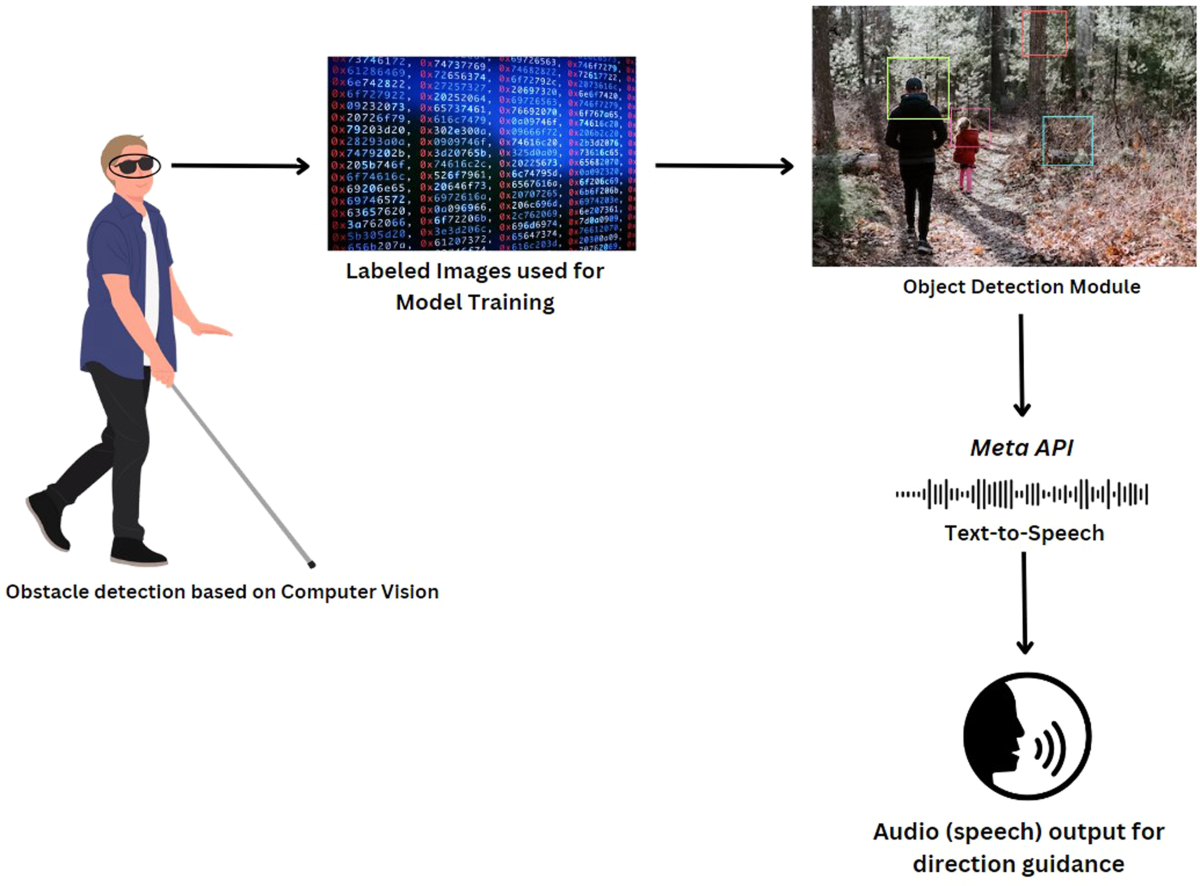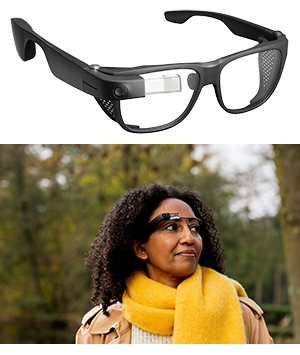Voice-Activated Assistive Devices: Empowering the Visually Impaired Through Innovation
Voice-Activated Assistive Devices: Empowering the Visually Impaired Through Innovation
Blog Article
Discover Advanced Assistive Devices for Individuals With Visual Problems
The landscape of assistive technology for individuals with visual impairments is progressing quickly, offering a series of ingenious devices that enhance autonomy and interaction (Braille displays and notetakers). From smart glasses that flawlessly combine visual input with acoustic support to innovative navigation applications that redefine spatial recognition, these devices are reshaping possibilities. The newest developments in Braille innovation and voice-activated systems significantly contribute to accessibility. The implications of these growths prolong much past mere functionality; they challenge standard understandings of disability and independence. What might this imply for the future of inclusion and support?
Smart Glasses Innovations
Smart glasses represent a considerable innovation in assistive technology for individuals with aesthetic disabilities. Furnished with cameras and sensing units, wise glasses can capture real-time aesthetic info, which is then refined and shared to the individual through sound comments or haptic experiences.
In addition, innovations in expert system have actually further improved the capabilities of wise glasses. Equipment understanding algorithms can recognize faces, checked out text, and recognize items, making them vital tools for everyday tasks. Users can receive acoustic cues that offer context about their environment, promoting freedom and confidence.
In addition, the ergonomic style and light-weight nature of numerous clever glasses make them suitable for long term usage, making certain convenience while improving capability. As these devices continue to develop, they hold the possible to transform the means individuals with visual disabilities experience their daily lives, connecting the space in between accessibility and innovation. The recurring r & d in this field pledge to increase the possibilities for wise glasses, making them a vital part of modern-day assistive devices.
Navigation Application and Devices
Numerous navigation apps and tools have actually become vital resources for people with aesthetic problems, considerably enhancing their capacity to go across strange environments. These technologies utilize GPS performance, audio signs, and real-time information to offer individuals with specific navigating assistance.
One popular instance is the Aira application, which attaches customers to trained agents that can provide aesthetic summaries of environments and navigating advice via an online video feed. This service enhances the customer's spatial recognition and self-confidence while browsing. An additional notable device is Seeing Eye GPS, which supplies voice-guided navigating and sights, enabling users to access important info about their surroundings.

As innovation remains to advance, the development of extra advanced navigation tools guarantees to additional equip people with aesthetic problems, promoting smooth wheelchair and combination into varied atmospheres. Such advancements contribute in advertising a much more comprehensive society.
Braille Modern Technology Improvements
Recently, developments in Braille innovation have considerably transformed how people with visual impairments gain access to information and involve with the world around them. The growth of portable Braille displays has actually changed analysis by permitting users to connect wirelessly to smartphones, tablet computers, and computers. These gadgets convert message into Braille in real-time, making it possible for seamless communication with digital content.
Moreover, innovative Braille printers have actually emerged, enhancing the manufacturing of tactile products. Modern embossers are quicker and much more efficient, permitting the fast development of Braille documents and instructional materials. This performance minimizes the time and expense connected with generating Braille resources, making them much more accessible to companies and institutions.
In addition, the combination of Braille with various other innovations, such as artificial intelligence and artificial intelligence, has actually opened up new opportunities for personalized discovering experiences. visite site Voice acknowledgment and synthesis technologies can page match Braille, giving an inclusive technique to information circulation.
As the need for inclusive education and learning and workplace atmospheres grows, these technical advancements play a crucial duty in empowering people with aesthetic problems, guaranteeing they have equal access to details and possibilities in numerous facets of life.
Wearable Tools for Self-reliance
An expanding range of wearable gadgets is enhancing self-reliance for individuals with aesthetic disabilities, using innovative remedies that enhance navigation and everyday living. Braille displays and notetakers. These devices utilize sophisticated modern technologies to provide real-time responses and assistance, promoting autonomy in various settings

Wearable modern technology likewise consists of smartwatches that can be configured with access features, making it possible for individuals to receive notifications, track their places, or also require support with the touch of a switch. Some devices incorporate fabricated intelligence to examine the setting, offering sound descriptions of nearby things or people.
Voice-Activated Assistive Solutions
Leveraging voice-activated assistive services has changed the landscape of support for people with visual impairments, offering hands-free interaction and access to a range of tasks. These innovations use all-natural language handling and expert system to enable customers to execute daily activities with simple voice commands.

Additionally, recent improvements in voice check over here acknowledgment accuracy have enhanced the individual experience substantially, suiting diverse accents and speech patterns. This inclusivity ensures that more people can profit from these modern technologies, cultivating a greater sense of freedom.
Conclusion
In verdict, the development of sophisticated assistive gadgets substantially improves the independence and quality of life for individuals with aesthetic impairments. Advancements such as wise glasses, navigation applications, Braille innovation, wearable gadgets, and voice-activated remedies collectively promote a more inclusive environment. These innovations encourage users to browse their environments with self-confidence and engage even more totally with the world, ultimately advertising better availability and level playing fields for people facing aesthetic obstacles.
The landscape of assistive technology for individuals with visual problems is progressing quickly, presenting a range of cutting-edge devices that improve freedom and involvement.Smart glasses represent a considerable advancement in assistive technology for people with visual problems. As these gadgets proceed to progress, they hold the potential to reinvent the way individuals with visual problems experience their day-to-day lives, connecting the space in between access and modern technology.In recent years, developments in Braille technology have considerably transformed just how individuals with aesthetic problems gain access to info and involve with the world around them. These innovations empower customers to navigate their surroundings with self-confidence and engage even more fully with the world, eventually advertising better ease of access and equivalent opportunities for individuals encountering visual difficulties.
Report this page